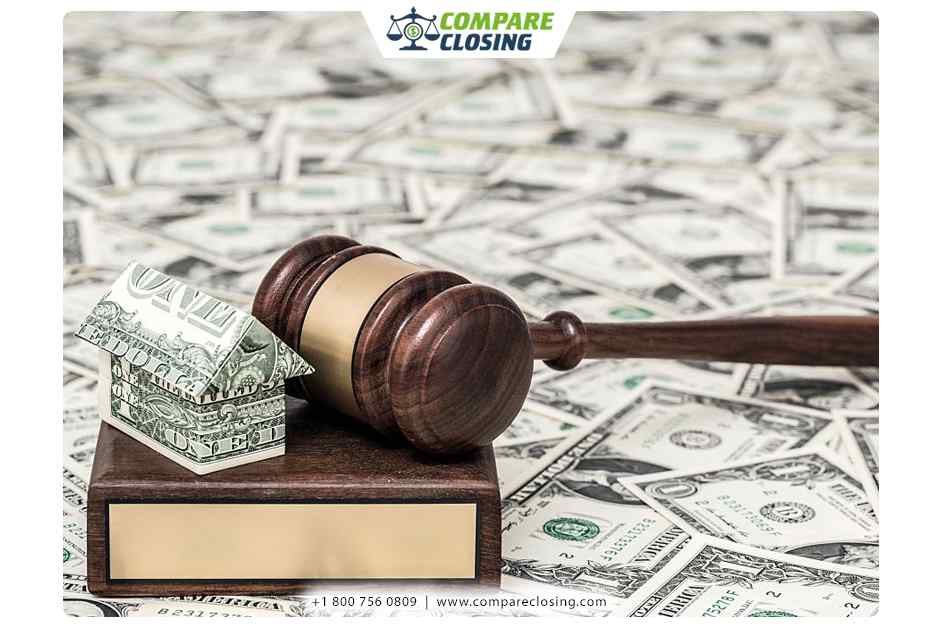Table of Contents
- What Are Netting Escrows & How Does It Work?: The Best Guide - January 2, 2024
- The Secret About Prescriptive Easement: Top Guide 1 Must Know - December 4, 2023
- About Home Equity Loans In Texas And How Can One Obtain It - November 27, 2023
Introduction to the Subprime Mortgage
Borrowers who do not qualify for conventional loans because of various high-risk factors such as poor credit history, low income, and a high debt-to-income ratio are offered a loan called a subprime mortgage.
Due to the heightened risk associated with subprime borrowers, these loans generally have higher interest rates than conventional loans.
What is a subprime mortgage loan?
Subprime loans are used as a way to finance individuals who have poor credit, low income, or limited credit history and do not qualify for conventional loans.
Most auto loans, mortgages, and personal loans are the types of loans that have subprime options.
In such cases, lenders focus on a borrower’s income instead of their credit score just to ensure that the borrower has enough money to repay the loan.
Though technically there are no credit score cutoffs for many types of loans, borrowers with credit scores below 650 have a hard time getting approved for conventional loans.
The loan approval depends on many factors, like having a good credit score is one of the most important factors because it will show whether you can pay off the loan or not.
To help people with poor or little credit history, subprime loans were created so they can qualify for loans and assist them in buying a home, car, or financing other things that they may not be able to fund on their own.
Because of their credit history even if many borrowers have the financial ability to pay off a loan, but need help qualifying for a loan.
Desperate borrowers who have exhausted other options and know very little about loans, fall prey to some lenders who charge these borrowers high interest and fees.
Lenders sometimes tend to hinder a borrower’s ability to repay the loan by charging high-interest rates and by taking advantage of the borrower’s situation or lack of financial understanding.
There are laws in many states to prevent high-interest rate loans and control predatory lending, but, sometimes, it still happens.
Because of their name, higher interest rates, and their association with predatory lending subprime mortgage loans tend to have a bad reputation.
However, there are some advantages to getting a subprime mortgage loan when you don’t qualify for a conventional loan and are capable of repaying the loan.
Advantages & Disadvantages of Subprime Mortgage
Let us look at some advantages and disadvantages of subprime mortgages to help you decide if they are right for you.
The Advantages of a Subprime Mortgage:
- Borrowers are able to qualify for subprime loans even with a poor or little credit history or a high debt-to-income ratio.
- These mortgages can help borrowers who need to pay off other debts by consolidating the debt and making payments easier.
- If the borrowers make timely monthly payments, then a subprime mortgage can help fix the borrowers’ credit score.
- Government regulations have a cap on how high-interest rates on loans can get and the lenders must follow the enforced rules.
- Subprime borrowers have greater opportunities to own homes, cars, and other things that they wouldn’t be unable to fund on their own.
The Disadvantages of a Subprime Mortgage:
- Subprime mortgage loan carries more risk to lenders which can lead to higher interest rates for borrowers.
- Because of the high-interest rates borrowers are more likely to default on loans and ruin their credit score further.
- Subprime mortgage loans have higher interest rates than conventional loans resulting in high monthly payments.
- If the borrowers are unprepared then predatory lenders could charge high-interest rates or hide fees that could be bad.
- Since the borrowers have to pay more fees including processing fees and high up-front payments it would be difficult for some borrowers to be able to afford it.
Even with the positive qualities of subprime mortgages, you should only borrow if you are confident that you will be able to pay off the loan.
Paying off the loan will benefit you by fixing your credit score.
Be aware that even with the benefits, there are much higher fees associated with subprime loans, because defaulting on a loan will ruin your credit.
Characteristics of Subprime Borrower
- Borrowers who apply for subprime mortgage loans usually share certain characteristics, like:
- According to Equifax, they have a FICO credit score below 650.
- They have lower incomes.
- They have little to no credit history.
- Their debt-to-income ratio is 50% or more.
- They have a history of late payments on loans or credit cards.
- They would have a foreclosure in the last 24 months.
- They could have a history of bankruptcy in the last 60 months.
- They are self-employed, new business owners, or retirees.
It doesn’t mean that having any or all of these characteristics you won’t be able to qualify for a loan, but it may just make it a little more difficult, and the hard inquiry from applying will lower your credit score further.
Before borrowing it’s best to resolve any credit or debt issues so you increase your chances of approval and lower your interest rate for the loan.
If there is any doubt about whether you’ll be able to repay the loan, then it’s best to wait until you have got a stable income and have paid pay off any other debt that you’ve built up.
What are the Types of Subprime Loans?
For most loan types there are subprime options.
All the subprime loans function the same because they’re a loan for those borrowers who have a high risk of defaulting due to low credit scores, poor or little credit history, a high debt-to-income ratio, or any other factor.
Subprime Auto Loans
These loans tend to have higher interest rates than conventional auto loans, and if the borrower is incapable to repay the loan, the lender will repossess the car and sell it.
If you miss a payment, your lender can sue you for the remainder of the loan amount.
The percentage of auto loans given to borrowers with subprime credit ratings has fallen to its lowest point since 2012 noted a report by Experian.
Now the approval of subprime auto loans is rarely happening because the critics claimed that financial institutions were offering too many loans to subprime buyers.
Now better credit history and more assurances are looked for by lenders so that the borrower won’t default on the loan.
Lenders are offering subprime auto loans with longer repayment periods to ensure that borrowers are able to pay their loans.
For a borrower, a long term length is not ideal because a car depreciates quickly, and the longer the term, the less equity they have in the car. So it is better to consider other options such as leasing instead of a subprime loan.
Subprime Mortgages
Generally, mortgage loans are classified as either prime or subprime, depending on the risk of a borrower defaulting on the loan.
Adjustable-rate mortgages, fixed-interest mortgages, and interest-only mortgages are the main types of mortgage loans.
If a mortgage is given to someone who has poor credit—generally a credit score below 650 then that mortgage is considered as a subprime mortgage.
Subprime mortgage lending hit an all-time high in 2005, leading to the 2008 financial crisis.
Because central banks tried to stimulate the economy with lower interest rates and increasing demand for mortgages, lenders started giving loans to people with poor credit and a high risk of default.
When home prices began to fall, in late 2005, it led to borrowers being unable to afford their mortgages, defaulting on their loans, and subprime lenders filing for bankruptcy.
Many lenders refused to give out loans to consumers with low credit scores after the financial crisis.
Though lenders have started to offer subprime mortgage loans again, the process is much longer requiring more documentation and verification by the lender that borrowers can afford to pay off the loan.
Subprime Personal Loans
Most personal loans are unsecured because they’re not backed by collateral and are pose a bigger risk for lenders. Personal loans are used by many people to consolidate debt or fund big purchases.
Lenders may offer you a secured loan that you can back with collateral if you’re unable to qualify for a subprime unsecured personal loan so that it helps lower your risk for lenders.
The lender can seize the asset you put up for collateral and your credit will also take a hit if you are unable to make timely payments.
Ways to Avoid Subprime Loan Pitfalls
If you’re not prepared for the high-interest rates, extra fees, and potentially predatory lenders, then subprime loans can be hazardous.
Take steps to lower your risk and ensure that you’re able to repay the loan in order to avoid defaulting on a subprime loan. Following are some tips to avoid subprime loan traps:
- Include the potential loan payment by budgeting your income.
- Be vigilant, check your credit score, and get any errors in your credit history fixed immediately.
- Improve your credit score by making on-time payments and paying down any existing debt wherever possible.
- Shop around for other lenders too.
For your loan consider getting a cosigner who has strong credit and income.
Conclusion
The mention of subprime mortgage leads to having the guards up for investors, bankers, and homeowners.
Do your research well before paying any fees or giving out personal information. Remember that a cosigner is responsible for repaying your loan if you are unable to, so don’t take risks.
Defaulting will hurt the borrower his credit score and also the lender.
Amanda Byford
Amanda Byford has bought and sold many houses in the past fifteen years and is actively managing an income property portfolio consisting of multi-family properties. During the buying and selling of these properties, she has gone through several different mortgage loan transactions. This experience and knowledge have helped her develop an avenue to guide consumers to their best available option by comparing lenders through the Compare Closing business.






Thanks a bunch for sharing this with all of us you actually know what you’re talking about! Bookmarked. Kindly also visit my web site =). We could have a link exchange contract between us!
Thanks for pointing out that subprime loans help to finance individuals that have a limited credit history, poor credit, or low income. With this in mind, I will be sure to find an auto financing company that offers subprime loan services. When my husband died many years ago, I suffered from a financial crisis that got resolved after almost a year. I want t to ensure that this won’t cause my loan disapproval since I badly need a car.